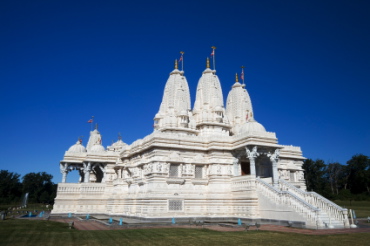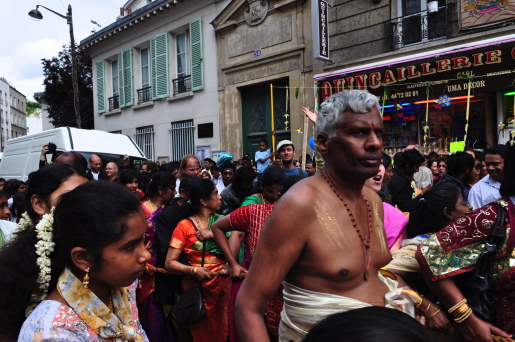
The preliminary results of a first of its kind census of Hindus in the U.S. were presented at the meeting of the Association for the Study of Religion, Economics and Culture, April 8-10. The census, conducted by J. Gordon Melton (Institute for the Study of American Religion) and Constance Jones (California Institute for Integral Studies), counted both Hindu temples and Hindu adherents. The census finds a total of 606,000 active Hindus in the U.S. The researchers assumed that for every active Hindu there is another one who may identify with the community but at present is not showing this preference in any visible manner. Thus the total number of Hindus in the U.S. would be close to the figures found in recent polls of the number of people self-identifying with the religion-about 1.2 million.
Melton and Jones find that the Hindu community is divided between autonomous Hindu temples, consisting of different Indian regional and ethnic identities, numbering around 260, and temples and centers attached to various Hindu movements that arose in India in the 19th and 20th centuries, estimated at more than 400. There are also more than 100 groups that have given up temple worship and rituals and meet together in small numbers at meditation centers, often called satsangs, that tend to stress a particular Hindu-based spiritual practice, such as yoga, and philosophy and draws many Westerners as members. Finally there are hundreds of guru-based movements that have grown since World War II and, after attracting controversy in the 1970s and 1980s, experienced growth and stability as they approached the new millennium.
Within the Indian-American community, the researchers find that the Swaminarayan movement has gained special prominence, largely through its practice of building large and elaborate temples, such as one in Atlanta, Georgia, dubbed to be the largest temple in the Western world. While the guru-based and meditation center forms of Hinduism have had large Western memberships, that situation has changed with the International Society for Krishna Consciousness (ISKCON or the Hare Krishnas). While some ISKCON temples still cater to European-American members, many temples consist completely of Indian-Americans, mostly of Gujarati background.
Melton and Jones also find that Hindus are closely concentrated in certain areas of the U.S.; one-third of them are found in two clusters in only three states-California, New Jersey and New York. While there is at least one Hindu center in every state, a large percentage of these groups “remain small and fragile, with no permanent home or facilities.” They conclude that American Hinduism exists on an upward trajectory, growing at a rate far ahead of population growth, though substantially less than what appeared to be happening in the 1970s,” with a group such as Transcendental Meditation initiating over a million non-Indian Americans.

Aside from growth in the U.S., Hinduism is increasingly taking on a public expression in Europe, according to a paper presented by Silke Bechler (University of Heidelberg). The Hindu ceremony of Vedic sacrifices, a traditional ritual involving burning sacrificial offerings to ensure for good health, prosperity and the removal of other obstacles, has been modified by Hindus living in the diaspora in more public and multicultural directions. Bechler distinguishes between two different types of Vedic sacrifices. The first kind is private and usually celebrated in homes without a priest. The second kind are traditionally more communal and are now performed by business people or even political parties in India to protect a cultural heritage, benefit the environment or promote world peace.
Bechler added that in diaspora communities many of these rituals are shortened or eclectically performed, often to appeal to the diverse traditions these Western Hindus come from, not to mention non-Hindus consumers. These rituals in the West have become philanthropic events, increasingly associated with issues such as provision of health care, education, disaster relief and other forms of social welfare. One example is a Vedic sacrifice held in Germany in 2008, sponsored by the European non-profit organization Yoga Vidya, which offered participants a program focusing on health treatments and recreation.
Bechler concludes that Westerners’ involvement in such events may be a way of dealing with the challenges of globalization and the rising power emerging from Asian countries. The European acceptance and adaptation of such practices and rituals may be giving a voice to public religious expression in a way that has been missing in their own secular societies, she adds.
Richard Cimino